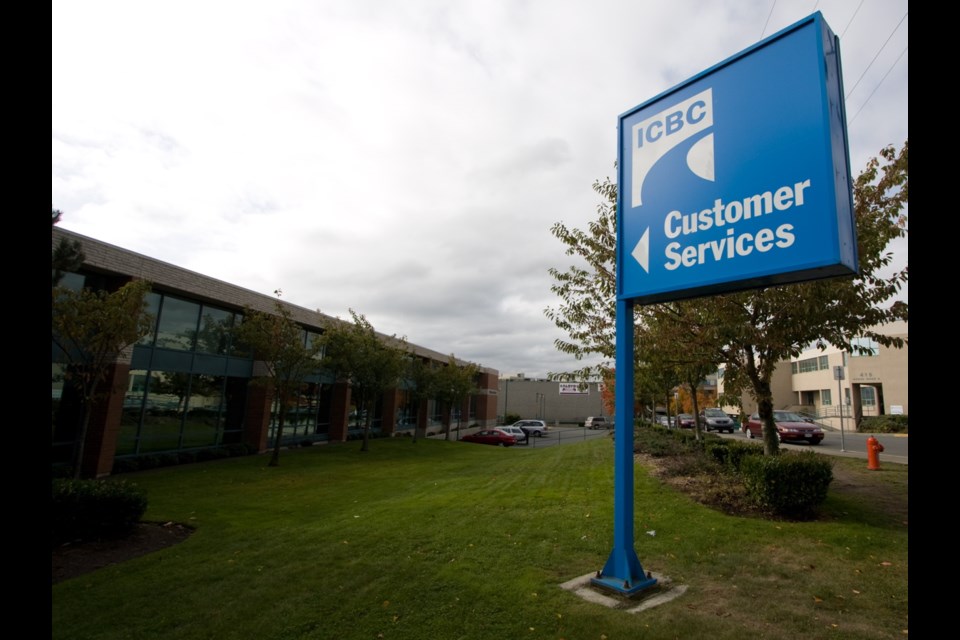 So your insurance system involves lots of dangerous drivers who constantly speed into crashes, then hire lawyers to make expensive claims that are now on the verge of bankrupting the plan?
So your insurance system involves lots of dangerous drivers who constantly speed into crashes, then hire lawyers to make expensive claims that are now on the verge of bankrupting the plan?
There’s an app for that.
It’s called photo radar.
The controversial old speed-trap gimmick from years gone by recently flickered back into the news. It was presented as one of the options to get ICBC out of the fiscal death spiral it’s in. It lasted half a day before being ditched again, as the NDP government adopted the B.C. Liberal line against the system. Attorney General David Eby spent about 60 seconds thinking about it before he dismissed it.
It’s a debatable call.
Eby told the CBC: “It is wildly unpopular among British Columbians. They hate it. We’ve heard that loud and clear.”
But since when is popularity a criterion for using an enforcement measure? Everybody hates getting tickets, no matter what the delivery system. That doesn’t stop agencies from writing them. Eby seems to be ditching a measure that might work simply because he wants people to like him.
There are a lot of ancient grudges that come with the system, and they seem to be getting in the way of appraisals of whether a 21st-century version would work. What photo radar needs is a slick new rebranding effort that would sweep away all the baggage that comes with the term.
That’s already underway, to some extent. Advocates are using the term “speed cameras.”
One of the knocks against photo radar was that when the NDP government introduced it in 1996, it was operated by a complement of 100 police officers. They were all highly trained, highly paid officers who were reassigned to sit in vans on the side of the road and stare into laptops. It was a monumental waste of police resources, since the job needed about two weeks of training.
But those days are gone. We live in a world where people sit in cubicles in the U.S. and rain drone hellfire down on war zones thousands of kilometres away. Automating a speed trap is no longer a problem. And authorities are so much further down the “state surveillance” road, the worries from the 1990s seem quaint.
The bigger beef was the delivery system, where you’d get a ticket in the mail showing a grainy picture of your vehicle purporting to show it speeding and have little or no idea if you could contest the charge. Exactly the same system is used with red-light cameras, but there’s never been a groundswell against their use. It’s likely because they’re used so haphazardly.
Photo radar became a hot-button for right-wing parties after Ontario Conservatives campaigned against it, and got elected. B.C. Liberals borrowed the idea from the B.C. Reform Party for the 2001 campaign, not that they needed it.
After they won, the first open cabinet meeting was devoted mostly to abolishing photo radar. By that point, after five years in operation, photo radar was a political nightmare. It gave the NDP government fits the whole time it was in use.
The institutional memory of that episode is probably still in the NDP’s mind. (Alberta’s newly unified right wing is talking about a referendum on photo radar.)
It’s worth noting that technically, the system worked perfectly. Radar caught the speeders, the camera caught the evidence and the tickets produced the revenue. It made about $80 million over five years, although original revenue estimates were ludicrously more than that.
The consultants’ report on ICBC that prompted the new mention is enthusiastic about “speed cameras,” saying the lack of speed enforcement in B.C. is concerning.
A comprehensive automated enforcement program would reduce claims costs by cutting accidents and fatalities.
People will still complain about it being a “cash grab.” But so what?
ICBC is in such bad shape, the consultants say drivers face the prospect of a 30 per cent rate hike over the next two years, sending the average annual premium to the $2,000 range.
So a cash grab of some sort is inescapable. Every dollar they grab from people who drive dangerously fast is a dollar left in the pockets of those who observe speed limits.



